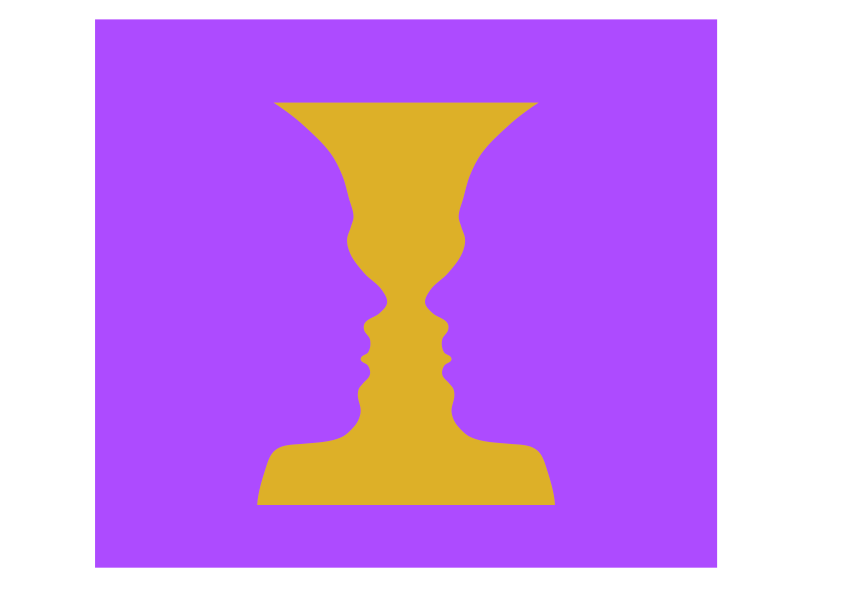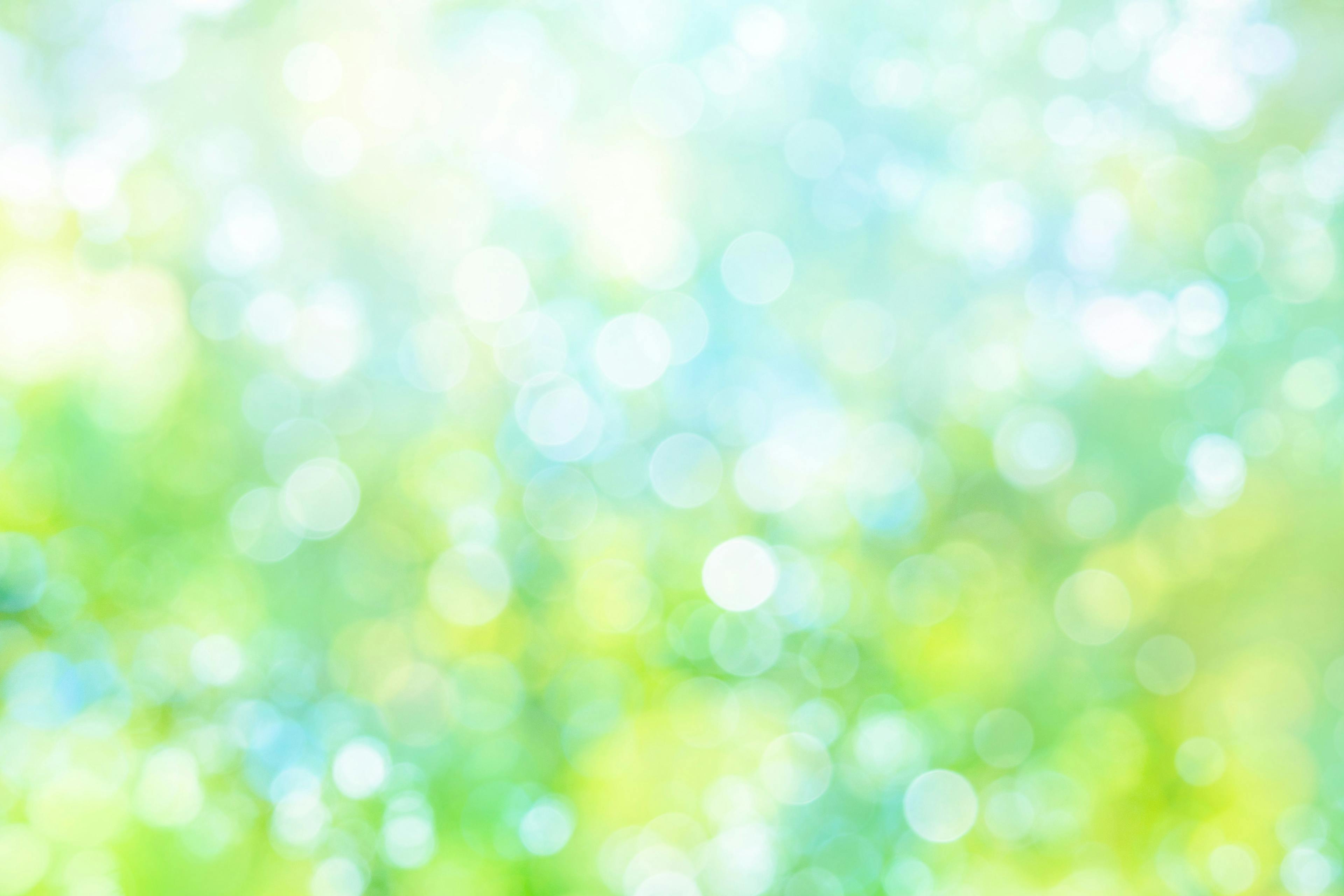Comparing the Flavour Profiles of Soft Drink Brands Using Immersive Sorptive Extraction, GC×GC–TOF-MS, and Chemometrics
Immersive sorptive extraction coupled with comprehensive two-dimensional gas chromatography and time-of-flight mass spectrometry (GC×GC–TOF-MS) was used to compare flavour profiles from popular brand soft drinks with those of imitation products.
Unlike counterfeit goods, replica and imitation products are legal because they do not use the branded product’s trademark. In the food and beverage industry, imitation products attempt to mimic the taste experience of popular branded products.
However, flavour profiles are extremely complex and consist of a broad range of chemical classes, the combination of which ultimately determines the consumer’s preference for a particular brand. It is important to be able to confidently identify these volatiles during product development, as well as in quality and authenticity studies.
Traditional sample preparation methods, such as headspace and solid-phase microextraction (SPME), are widely used but are often limited in terms of sensitivity. Additionally, sampling is generally restricted to the headspace volatiles, meaning that there is a bias towards nonpolar analytes. This article demonstrates the use of high‑capacity sorptive extraction with novel trap-based focusing to provide enhanced sensitivity and improved chromatographic performance, as well as the ability to perform both headspace and immersive sampling for compatibility with a wider range of polar and semi-volatile analytes. This improved performance, coupled with improved separation by comprehensive two-dimensional gas chromatography (GC×GC) and detection by time-of-flight mass spectrometry (TOF-MS), gains greater insight into sample composition.
However, sampling, separation, and detection is just the beginning—the resulting datasets must then be reduced to discover significant differences and ultimately allow meaningful conclusions to be reached. This article will also demonstrate the use of chemometrics to help transform complex datasets into usable results. The approach used ensures that trace peaks are not ignored and enables automated workflows to be adopted,. This workflow will be presented for the comparison of brand and imitation cola‑flavoured soft drinks.
Experimental
Five store-bought cola-flavoured soft drinks were purchased from different suppliers. Sampling and analysis were performed in triplicate for each soft drink.
The following experimental conditions and instrumentation were used. For immersive sampling, HiSorb high-capacity sorptive extraction probes were used (PDMS/CWR/DVB, Markes International). Full automation was performed on the Centri extraction and enrichment platform (Markes International). GC×GC: Insight flow modulator (SepSolve Analytical); modulation period (PM) = 2.5 s. TOF-MS: BenchTOF2 mass spectrometer (SepSolve Analytical); mass range: m/z= 40–350; ionization energy: tandem ionization at 70 eV and 14 eV. Software: ChromSpace software (SepSolve Analytical) for full instrument control and processing was used, with chemometric comparisons by ChromCompare+ (SepSolve Analytical)
Results and Discussion
Coupling high-capacity sorptive extraction with GC×GC–TOF-MS ensured that a wide range of chemical classes were efficiently separated and confidently identified.
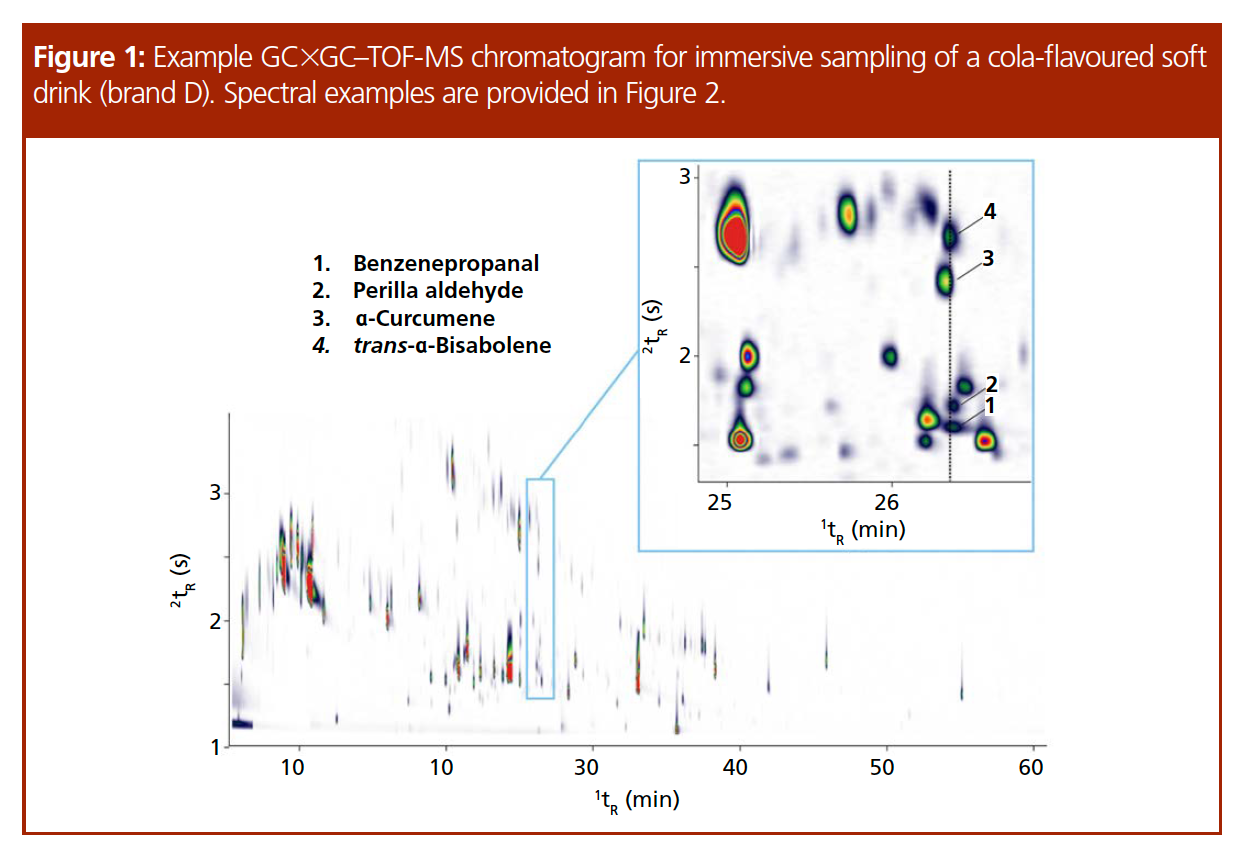
The additional chemical detail provided on the composition of soft drinks is clearly evident in Figure 1. Four compounds are highlighted that would have coeluted in a conventional one-dimensional (1D) analysis but have been separated in the second dimension and identified confidently using the spectral quality and mass accuracy of TOF-MS (Figure 2).

In this study, five “cola” soft drinks from different manufacturers were analyzed using this workflow. To determine the differences in composition between each brand of soft drink, a nontargeted, tile‑based workflow was then applied in the software to compare all of the raw data, and the most significant differences between the sample classes were identified automatically.

The resulting principal component analysis (PCA) score plot (Figure 3) shows distinct clustering of the different brands. Interestingly, brands B and E are both “diet” soft drinks from different manufacturers and cluster separately from the “zero sugar” brands.
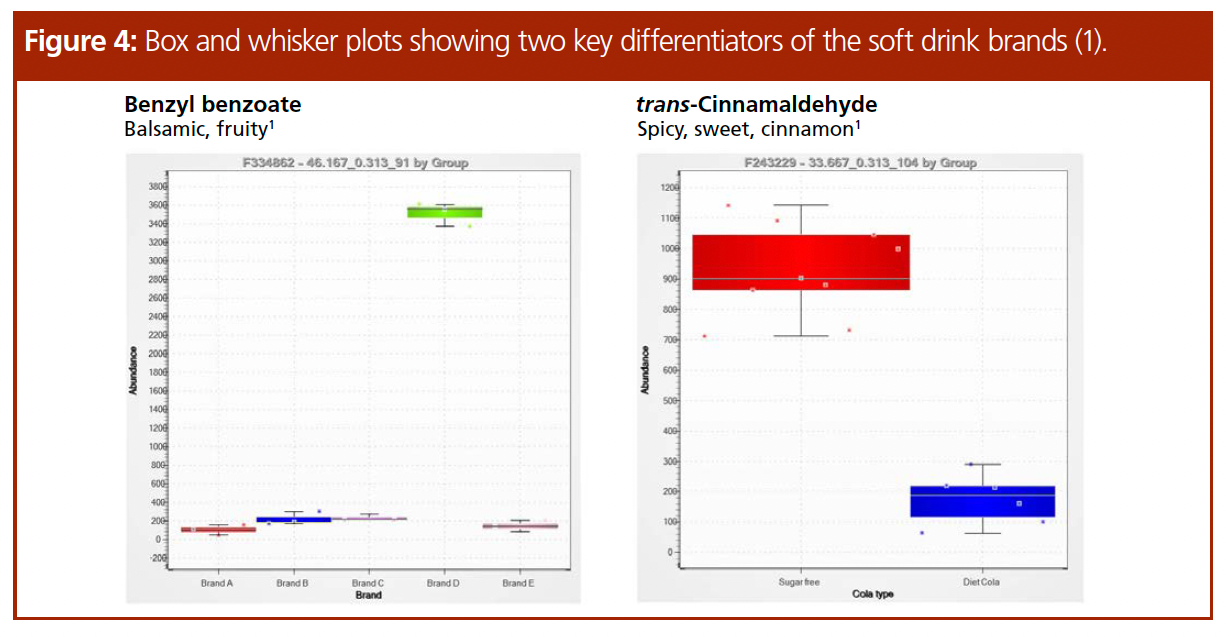
Benzyl benzoate was found to be a key differentiator of brand D (Figure 4, left) and likely contributed a balsamic, fruity flavour. Additionally, trans-cinnamaldehyde (Figure 4, right) was found to differentiate the “diet” and “zero sugar” classes.
Volcano plots in the software were also used to directly compare the imitation colas against popular brand products—an example of which is shown in Figure 5.
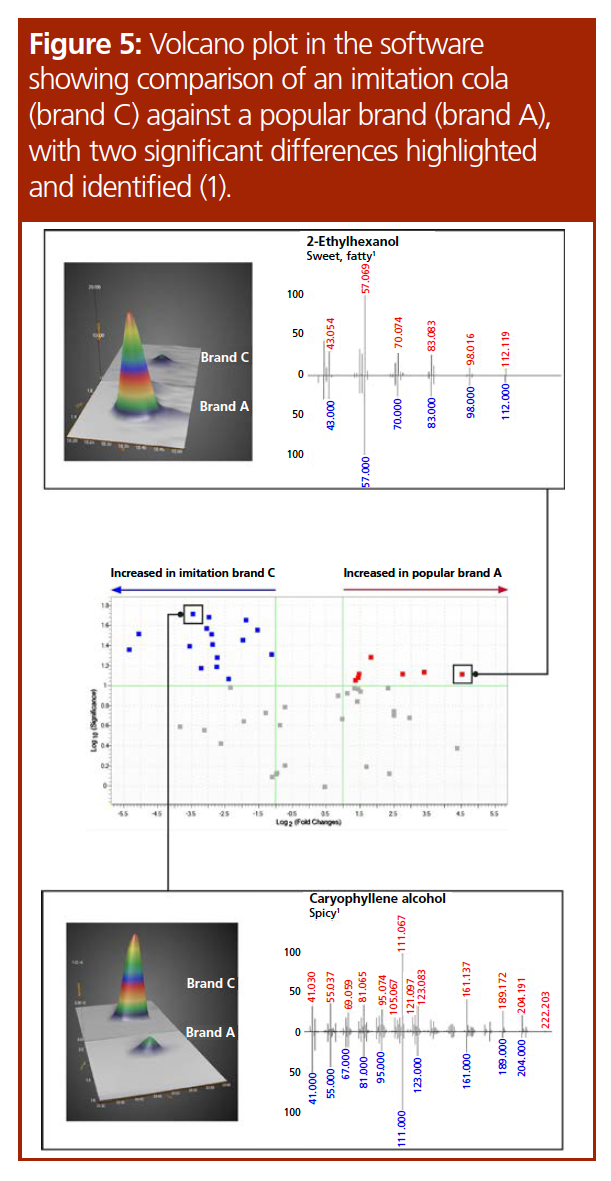
Figure 5 also shows the reference-quality spectra of the MS analysis. This helped to ensure confident identification of potential markers of brand and/or imitation cola products. It should also be noted that tandem ionization data were acquired in this study at 70 eV and 14 eV. The tandem data were used to confirm positive hits, improving the discovery of subtle, trace differences by reducing the frequency of false positives (2).
Conclusions
This study has demonstrated an end‑to‑end nontarget workflow for aroma profiling of food and beverages comprising fully automated immersive sampling of wide‑ranging aroma-active volatiles using high-capacity sorptive extraction. Enhanced separation by GC×GC using consumable-free flow modulation obtained comprehensive aroma profiles. Sensitive detection and confident identification of analytes were achieved using TOF‑MS. Chemometrics offered automated workflows for alignment and comparison of complex chromatograms.
References
- The Good Scents Company Information System (search facility). http://www.thegoodscentscompany.com/search2.html (accessed 2022-06-20).
- SepSolve, SepSolve Analytical White Paper 041: Improving discovery workflows using Tandem Ionisation data. https://www.sepsolve.com/white-papers/overview/technical-note-improving-discovery-workflows-using-tandem-ionisation-data.aspx (accessed 2022-12-19).
Laura McGregor received an M.Chem. in chemistry from the University of St Andrews, UK, followed by an M.Sc. in forensic science at the University of Strathclyde, UK. Her Ph.D. in environmental forensics, also at the University of Strathclyde, focused on the chemical fingerprinting of environmental contamination using advanced techniques such as GC×GC−TOF-MS. In her current role at SepSolve Analytical, she specializes in the application of GC×GC and TOF-MS to challenging applications.
Elinor Hughes obtained her B.Sc. in chemistry and Ph.D. in organic chemistry at Bangor University, UK. After working for a chemical manufacturing company for three years, she moved to the Royal Society of Chemistry where she worked in journals publishing for six years and on Chemistry World magazine for four years. This was followed by five years as a freelance copyeditor and science writer. Her current role is technical copywriter at Markes International.
James Ogden spent nine years working within an environmental analytical laboratory, where he was responsible for method testing, development, and implementation. In his current role at SepSolve Analytical, James supports customers through the development, demonstration, and handover of analytical methods across the company’s portfolio of instruments and software.
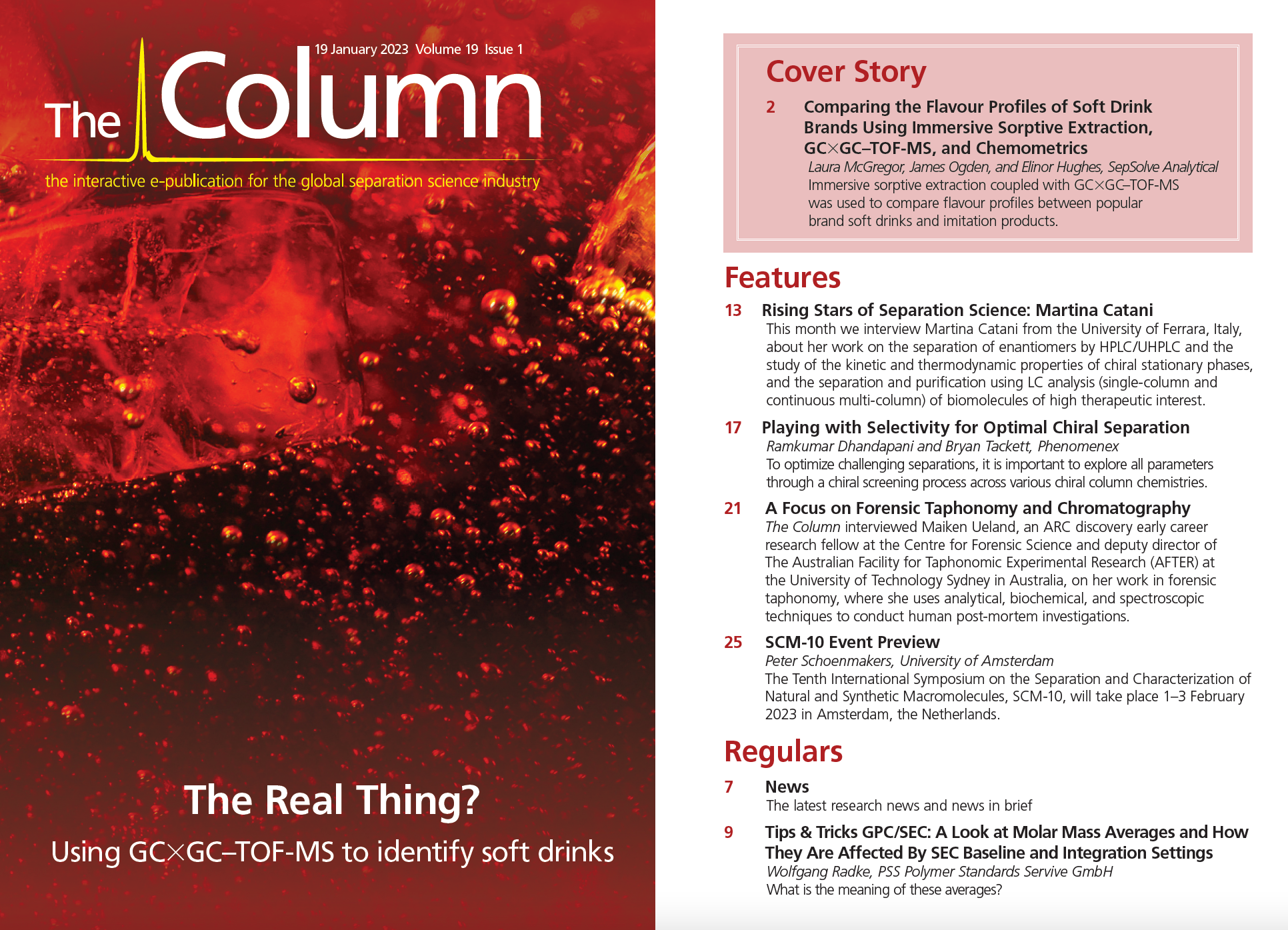
Analytical Challenges in Measuring Migration from Food Contact Materials
November 2nd 2015Food contact materials contain low molecular weight additives and processing aids which can migrate into foods leading to trace levels of contamination. Food safety is ensured through regulations, comprising compositional controls and migration limits, which present a significant analytical challenge to the food industry to ensure compliance and demonstrate due diligence. Of the various analytical approaches, LC-MS/MS has proved to be an essential tool in monitoring migration of target compounds into foods, and more sophisticated approaches such as LC-high resolution MS (Orbitrap) are being increasingly used for untargeted analysis to monitor non-intentionally added substances. This podcast will provide an overview to this area, illustrated with various applications showing current approaches being employed.
Sorbonne Researchers Develop Miniaturized GC Detector for VOC Analysis
April 16th 2025A team of scientists from the Paris university developed and optimized MAVERIC, a miniaturized and autonomous gas chromatography (GC) system coupled to a nano-gravimetric detector (NGD) based on a NEMS (nano-electromechanical-system) resonator.
Miniaturized GC–MS Method for BVOC Analysis of Spanish Trees
April 16th 2025University of Valladolid scientists used a miniaturized method for analyzing biogenic volatile organic compounds (BVOCs) emitted by tree species, using headspace solid-phase microextraction coupled with gas chromatography and quadrupole time-of-flight mass spectrometry (HS-SPME-GC–QTOF-MS) has been developed.

